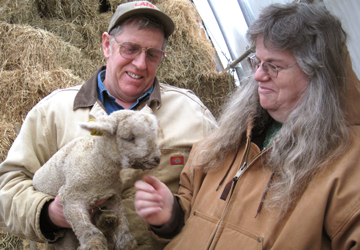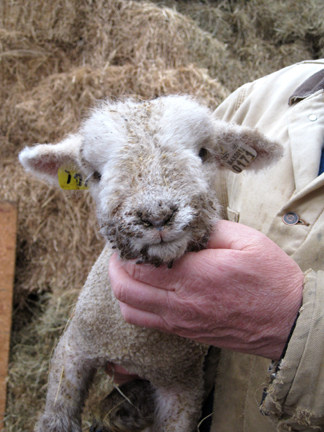
Katherine Scott Hallett circa 1890 (Courtesy of Bruce Hallett)
A few days ago I decided to get ready for Saint Patrick’s Day. I foraged in the basement for my light-up shamrock (which a neighbor whom I shall not name says makes the house look like a low-rent tavern). I affixed it to a window and went into the closet to pull out green clothing. My mother looked at the green shirt, glasses, and hat I extracted and said, “Your great grandmother would have been appalled.”
Indeed, Katherine Scott Hallett was not a person known for wearing green on March 17. Born in 1860, she died long before I was born, but I have heard stories about her all my life. To say that my mother disliked her grandmother would be an understatement. Mad Katie (as we sometimes call her in the family) had no tolerance for little girls with spirit. My mother was chock full of spirit.
They couldn’t even make it through greeting each other without getting into a fight. Katie only wanted to be called “Grandmother,” deeming any less formal name beneath her dignity. She also believed that the word “hello” was sacrilegious. In her view it was just an excuse for saying “oh, hell” backwards. Of course it gave little Janice a great deal of pleasure to arrive at the red brick house in Clyde, New York, and holler, “Hello, Grandma!” at the top of her lungs. Things went downhill from there.

My Great Grandmother’s House (the painting is signed “B. Christian”)
What, you may ask, does this have to do with Saint Patrick’s Day? Katie came to this country from Canada, but her family was Scots-Irish. They took part in one of the waves of Irish settlement by Protestant Scots. These settlements were encouraged, even sponsored, by the English. For centuries the rulers of England deluded themselves with the belief that if they kept bolstering the Protestant portion of the Irish population they would eventually weaken the hold of the Catholic Church and subdue the will of the Irish to rule themselves.
As a Protestant Irishwoman, Katie believed in wearing orange on Saint Patrick’s Day to celebrate the victory of Protestant William of Orange over his Catholic father-in-law, James II of England, in the battle of the Boyne in 1690. This Irish victory helped ensure that William and his wife Mary sat on the throne of England, Scotland, and Ireland. It also ensured that Protestants would have the upper hand in Ireland for centuries to come, leading to violence and resentment on both ends of the Irish religious spectrum.
To Katie wearing Orange on Saint Patrick’s Day was a tactic in the ongoing battle between Catholics and Protestants. This battle remained vital to her family long after they settled on this continent.
In many ways, I have sympathy for Mad Katie. Far from most of her family after moving to the United States, she lost her husband to pernicious anemia at a relatively young age. In her middle years the rigidity of her personality morphed into dementia. She became even more alienated from those around her.
I have a feeling that at some level she had a genuine affection for my mother, who by all accounts was a pretty cute child. (Today she’s a cute old lady.) Sadly, Katie was unable to express that affection.
So—what am I going to wear for Saint Patrick’s Day? I hesitate to don either orange or green at this point for fear of reigniting the war Katie kept fighting well after it should have been over for her. I could try to emulate the Irish flag and wear a bit of both, throwing a little white in between. I’m not sure that color combination would do much for my figure, however.
At this point, I think I’ll bow out of the orange-and-green wars and wear blue. This color was originally associated with Saint Patrick; there is actually a color known as Saint Patrick’s blue. Of course, I’ll probably still have to don a shamrock or two.
Happily, I can pay tribute to both Irish Catholics and Protestants by whipping up some traditional Irish dishes in my kitchen. My great grandmother may have hated her Catholic neighbors. Nevertheless, she was as partial as the next Irish-American girl to such foods as soda bread and Irish stew.
I dedicate this year’s Saint Patrick’s Day-related posts to her memory and to the Irish heritage that many Americans share.

Irish Stout Cheese Spread
I have to admit to a secret love for processed cheese spreads. There’s something comforting and just plain yummy about them. I hate to read the labels on the commercial ones, however. So I’m making my own instead. This spread has all the creaminess of store spreads, but I know what’s in it, which is reassuring.
If you want to make this savory spread even prettier, use a yellow Irish cheddar to create a golden dip. A note to food-processor neophytes like me: if you use the food processor, don’t try to scrape the spread off the blade with a rubber spatula. We ended up with a “secret ingredient” in our first batch: red plastic!
Ingredients:
2 to 3 tablespoons extra-virgin olive oil (for roasting garlic)
salt and pepper to taste (for roasting garlic)
6 ounces stout
1 pound sharp cheddar cheese, grated
1 8-ounce brick cream cheese at room temperature
2 tablespoons Worcestershire sauce
1 teaspoon Dijon mustard
1 teaspoon Creole seasoning
Instructions:
First, roast the garlic. You won’t actually need the entire head of garlic, but it’s silly to roast less than a head. For instructions on roasting garlic see my Springtime Irish Stew post.
Allow the stout to flatten a bit (you may do this while you roast your garlic if you like).
In a food processor or electric mixer, blend the cheeses and 1 tablespoon of the stout. Add the 1 teaspoon garlic, the Worcestershire sauce, the mustard, and the Creole seasoning. When they are well blended slowly pour in the remaining stout.
Let the cheese spread mellow in the refrigerator for 2 hours or more before serving; then return the spread to room temperature for best flavor and texture. Makes at least 1 quart of spread.


















